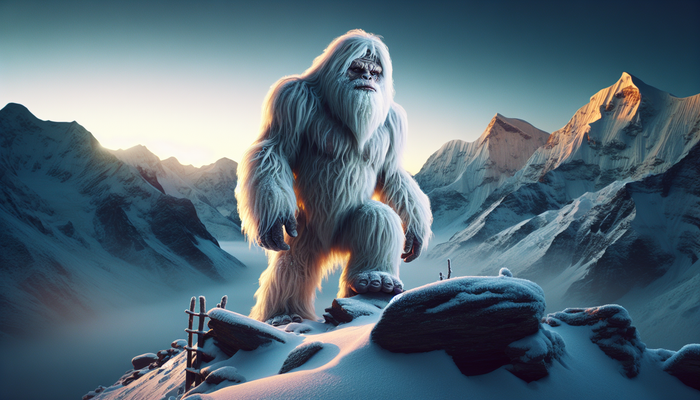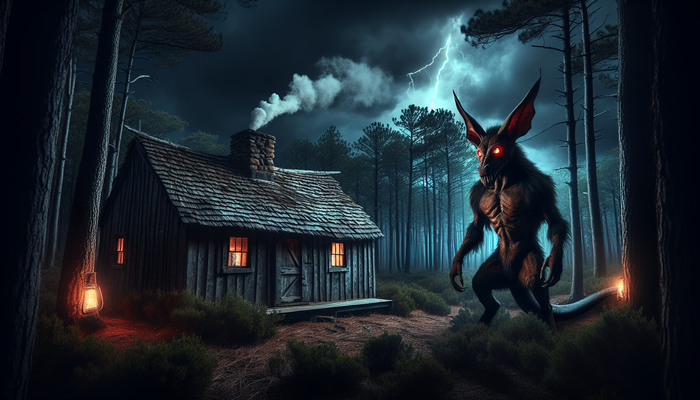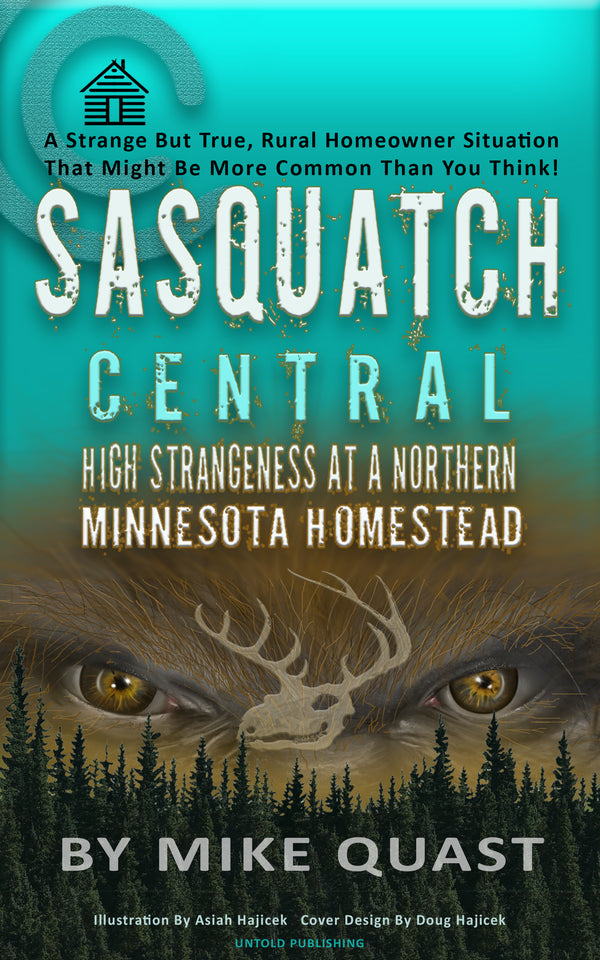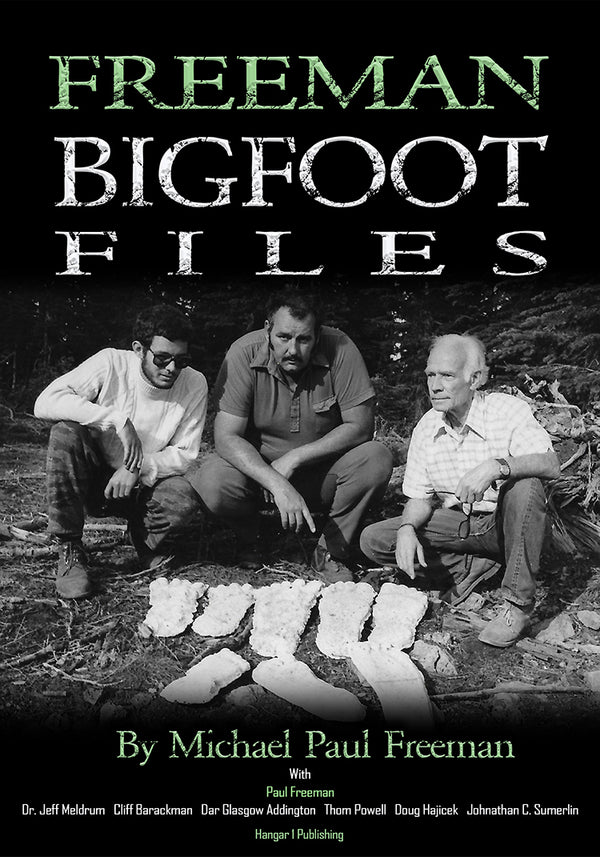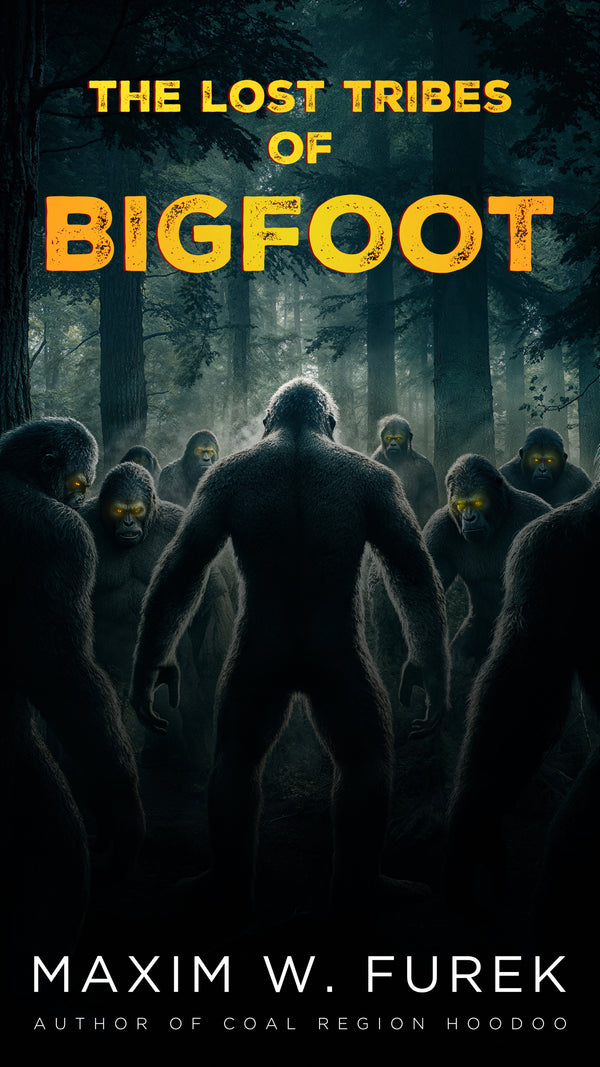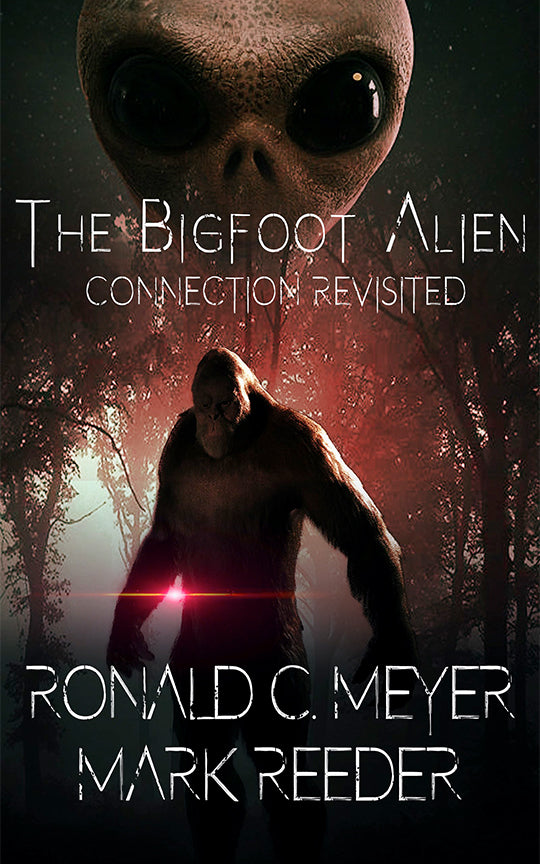Exploring Vermont's Bigfoot Legacy
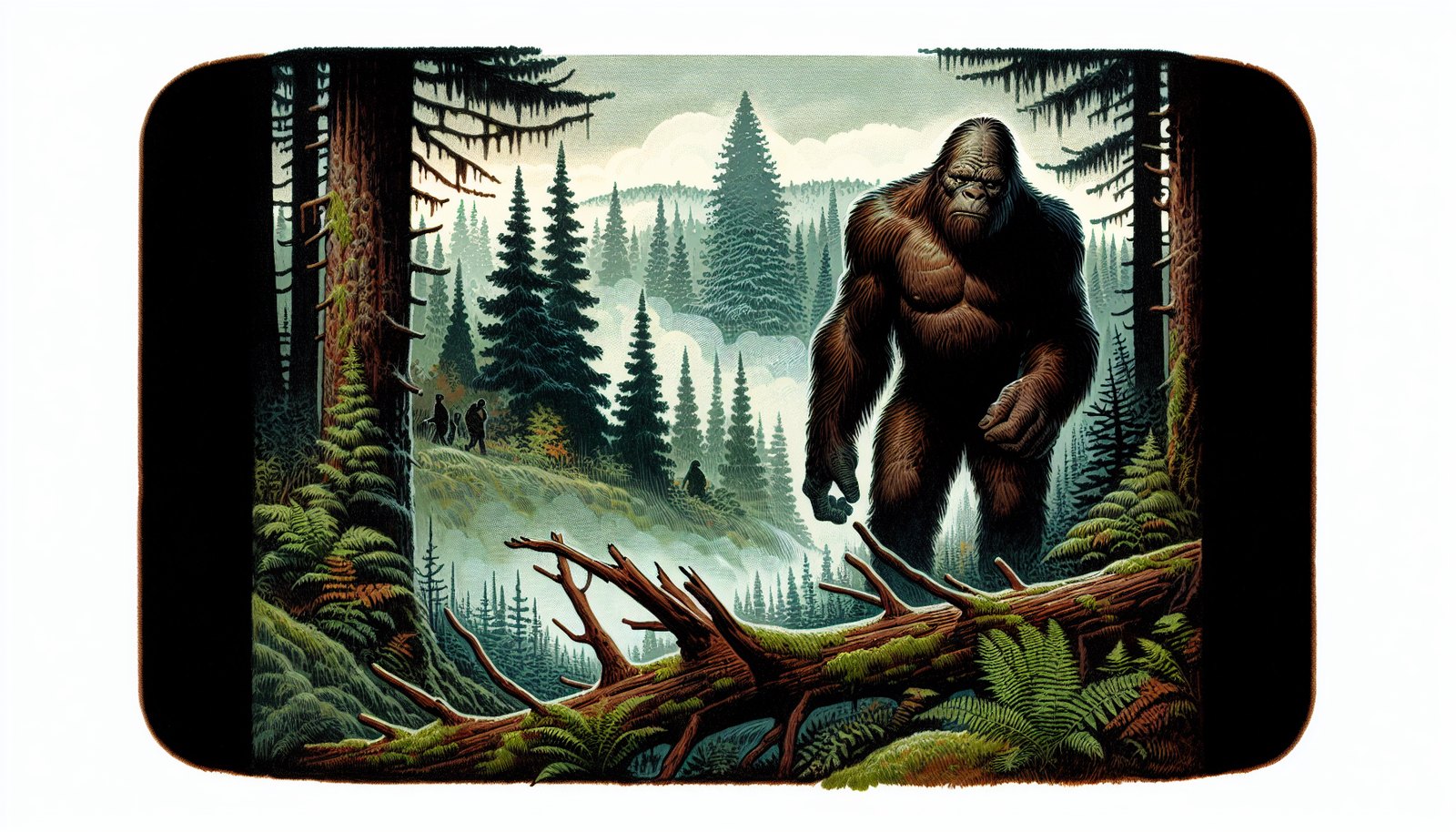
By Dr. Elizabeth Harper, Cryptozoologist
In the heart of New England lies a state steeped in mystery and intrigue—Vermont, a land where the line between reality and legend blurs. For centuries, the Green Mountain State has been a hotspot for Bigfoot sightings and folklore, captivating the imaginations of locals and visitors alike. As a seasoned biologist and historian in the Bigfoot research community, I have dedicated my life to unraveling the enigma that surrounds this elusive creature. Join me on a journey through time as we explore Vermont's long history of Bigfoot encounters and delve into the allure and fascination that has kept this cryptid in the spotlight for generations.
Picture a misty morning in the dense forests of Vermont, where the only sounds are the rustling of leaves and the occasional birdcall. Suddenly, a twig snaps, and a shadow moves through the trees—could it be the legendary Bigfoot, or merely a trick of the light? This is the essence of the Bigfoot phenomenon in Vermont, a tantalizing mystery that has persisted for centuries, drawing in skeptics and believers alike.
The Green Mountain State's rugged terrain and vast wilderness provide the perfect backdrop for tales of an elusive, humanoid creature roaming the forests. With its dense woodlands, hidden valleys, and remote mountain ranges, Vermont offers ample opportunity for a creature like Bigfoot to remain undetected by human eyes. It is this very landscape that has nurtured the legend, allowing it to take root and flourish in the hearts and minds of those who call Vermont home.
As we embark on this exploration of Vermont's Bigfoot legacy, it is essential to approach the subject with an open mind and a healthy dose of skepticism. While the evidence for Bigfoot's existence remains largely anecdotal, the sheer volume and consistency of sightings throughout history cannot be ignored. By examining these accounts through the lens of science and historical context, we may begin to unravel the truth behind the legend and gain a deeper understanding of the role that Bigfoot has played in shaping Vermont's cultural identity.
So, let us step into the realm of the unknown, where the boundaries between myth and reality blur, and the possibility of something extraordinary lurking in the shadows becomes tantalizingly real. As we traverse the centuries of Bigfoot encounters in Vermont, we will uncover a rich tapestry of stories, theories, and mysteries that have captivated generations. Whether you are a die-hard believer or a skeptical inquirer, the tale of Vermont's Bigfoot legacy is one that is sure to leave an indelible mark on your imagination.
Early Accounts: Vermont's Bigfoot Legends of the 1800s
The roots of Vermont's Bigfoot legend stretch back to the early 1800s, a time when the state was still a rugged frontier, its vast forests largely unexplored and untamed. It was against this backdrop that some of the earliest recorded encounters with the elusive creature took place, setting the stage for a mystery that would endure for centuries to come.
One of the most striking accounts from this era involves a stagecoach traveling through the wilderness of Vermont. As the coach wound its way along a remote, muddy road, the driver suddenly brought the horses to a halt, his eyes wide with fear. There, in the mud before them, were enormous footprints, far too large to have been made by any human. The passengers, curious and alarmed, peered out from the coach's windows, straining to catch a glimpse of whatever had left those monstrous tracks.
Their curiosity quickly turned to terror as a giant, hairy creature emerged from the forest, its eyes glowing in the dim light. With a roar that shook the very earth, the beast charged forward, slamming into the side of the stagecoach with incredible force. The coach tipped precariously, its occupants screaming in fear as they caught a fleeting glimpse of their attacker—a massive, humanoid figure covered in dark, shaggy hair.
As quickly as it had appeared, the creature vanished back into the forest, leaving the shaken passengers to ponder what they had just witnessed. The stagecoach attack, which occurred in the early 1800s, is just one of the many accounts of Bigfoot-like creatures that emerged from Vermont during this time period.
Throughout the 1800s, reports of large, bipedal, hair-covered humanoids continued to surface from the remote, heavily forested areas of the state. These sightings often described creatures that exhibited aggressive or startling behavior, further fueling the fear and fascination surrounding the legend of Bigfoot.
One such account tells of a lone trapper who, while checking his lines deep in the Vermont woods, came face to face with a towering, ape-like creature. The beast, standing well over seven feet tall, let out a bone-chilling scream before charging at the terrified trapper. The man barely managed to escape, his heart pounding as he fled through the dense undergrowth, the sound of the creature's pursuit echoing in his ears.
Stories like these, passed down through generations and whispered around campfires, began to weave themselves into the fabric of Vermont's folklore. The idea of a mysterious, humanoid creature lurking in the forests became an integral part of the state's cultural landscape, a legend that would continue to grow and evolve over the coming decades.
As we examine these early accounts, it is essential to consider the historical context in which they occurred. The early 1800s were a time of great change and uncertainty in Vermont, as settlers pushed deeper into the wilderness, encountering new challenges and mysteries at every turn. In a world where the boundaries between the known and the unknown were constantly shifting, the idea of a creature like Bigfoot may have seemed less far-fetched than it does today.
Moreover, it is important to recognize that these early accounts were often passed down through oral tradition, subject to embellishment and exaggeration over time. While the core elements of the stories—the large, hairy humanoids, the aggressive behavior, and the remote, forested settings—remain consistent, the details may have been altered or expanded upon as the tales were retold.
Despite the potential for embellishment, the sheer number and consistency of these early Bigfoot accounts in Vermont cannot be dismissed. The fact that similar stories emerged from different parts of the state, often from individuals with no connection to one another, suggests that there may be a kernel of truth behind the legend.
As we continue our exploration of Vermont's Bigfoot legacy, these early accounts serve as the foundation upon which the modern legend has been built. They provide a glimpse into a time when the wilderness was vast and untamed, and the possibility of something extraordinary lurking in the shadows seemed all too real. By examining these stories through the lens of historical context and cultural significance, we can begin to unravel the enduring mystery of Bigfoot in Vermont and gain a deeper understanding of the role that this enigmatic creature has played in shaping the state's identity.
The Whitehall Incident: A Turning Point in Vermont's Bigfoot History
As the 20th century progressed, Vermont's Bigfoot legend continued to evolve, with new sightings and encounters adding to the growing tapestry of the state's cryptid lore. However, it was a single incident in the small town of Whitehall that would forever change the course of Bigfoot history in Vermont, catapulting the legend into the national spotlight and cementing the state's reputation as a hotspot for Bigfoot activity.
The year was 1976, and the setting was a quiet, rural field on the outskirts of Whitehall. Two teenage boys, Marty Paddock and Paul Gosselin, were driving home from a camping trip when they spotted something that would haunt their memories for years to come. There, in the middle of the field, stood a massive, humanoid figure, its towering frame silhouetted against the evening sky.
As the boys watched in a mixture of awe and terror, the creature began to move, its long, powerful strides carrying it across the field with an eerie, loping gait. Paddock and Gosselin, their hearts pounding, could only stare as the beast drew closer, its shaggy, dark hair rippling in the breeze.
Suddenly, a sound pierced the air—a strange, unsettling cry that seemed to emanate from the very depths of the creature's being. It was a sound unlike anything the boys had ever heard before, a chilling blend of a woman's scream and a pig's squeal. The noise sent shivers down their spines, and they knew, in that moment, that they were witnessing something truly extraordinary.
The Whitehall incident, as it came to be known, quickly gained national attention, with news of the sighting spreading like wildfire through the media. Three separate law enforcement agencies launched investigations into the matter, interviewing the witnesses and scouring the area for any evidence of the creature's presence.
Despite the extensive efforts of the investigators, no concrete proof of the creature's existence was found. However, the impact of the Whitehall incident on Vermont's Bigfoot legend cannot be overstated. The sighting, with its vivid, detailed account and the involvement of multiple credible witnesses, lent a new level of legitimacy to the Bigfoot phenomenon in the state.
In the years that followed, Whitehall would come to embrace its newfound status as a Bigfoot hotspot. The town, recognizing the potential for tourism and community engagement, officially adopted Bigfoot as its "official animal" in 2018, a move that garnered national attention and solidified Whitehall's place in cryptid history.
Today, Whitehall is a veritable mecca for Bigfoot enthusiasts, with a thriving community of researchers, investigators, and curious visitors all drawn to the town's unique connection to the legendary creature. Bigfoot-themed businesses, events, and attractions have sprung up throughout the area, celebrating the town's cryptid heritage and providing a platform for those eager to explore the mystery further.
One of the most notable events to emerge from Whitehall's Bigfoot legacy is the annual "Sasquatch Calling Festival," a gathering that draws Bigfoot enthusiasts from far and wide. During the festival, attendees participate in a variety of Bigfoot-themed activities, including guided forest walks, educational presentations, and even a Bigfoot calling contest, where participants attempt to mimic the creature's infamous vocalizations.
The Whitehall incident and the subsequent embrace of Bigfoot culture in the town serve as a powerful testament to the enduring allure of the Bigfoot legend in Vermont. The sighting, with its vivid, unforgettable details, has become a cornerstone of the state's cryptid lore, inspiring countless others to come forward with their own encounters and experiences.
As we reflect on the significance of the Whitehall incident, it is important to consider the broader implications of such a sighting on the study of cryptids and the search for Bigfoot. The incident, with its multiple credible witnesses and the involvement of law enforcement, lends credence to the idea that there may be something more to the Bigfoot legend than mere myth and speculation.
Moreover, the Whitehall incident highlights the power of community engagement and the role that local culture can play in shaping and perpetuating cryptid legends. By embracing its Bigfoot heritage, Whitehall has not only created a unique identity for itself but has also provided a platform for others to explore and engage with the mystery on a deeper level.
As we continue our journey through Vermont's Bigfoot legacy, the Whitehall incident stands as a pivotal moment, a turning point that forever changed the course of the state's cryptid history. It is a reminder that, even in the face of skepticism and doubt, the power of a single, compelling encounter can be enough to ignite the imagination and fuel the search for truth in the face of the unknown.
The Bennington Triangle: A Nexus of Strange Occurrences
Deep in the heart of southwestern Vermont lies a region steeped in mystery and intrigue—the Bennington Triangle, a place where the boundaries between the natural and the supernatural seem to blur, and where strange occurrences have been reported for generations. This remote, heavily forested area, encompassing the towns of Bennington, Woodford, and Shaftsbury, has long been associated with Bigfoot sightings and other unexplained phenomena, cementing its reputation as a nexus of the bizarre and the unexplained.
One of the most striking aspects of the Bennington Triangle's history is the series of mysterious disappearances that occurred in the region during the 1940s and 1950s. Over the course of a decade, at least five individuals vanished without a trace in the remote, densely wooded area, leaving behind no clues as to their fate.
The first of these disappearances occurred in 1945, when 74-year-old Middie Rivers, an experienced hunting guide, vanished while leading a group of hunters through the rugged terrain. Despite an extensive search effort involving hundreds of volunteers and local authorities, no trace of Rivers was ever found.
The disappearances continued in the years that followed, with Paula Welden, a college student, vanishing while hiking the Long Trail in 1946, and James Tedford, a veteran, disappearing from a bus in 1949. The final two disappearances, those of 8-year-old Paul Jepson and 53-year-old Frieda Langer, occurred in 1950, further fueling the growing sense of unease and mystery surrounding the Bennington Triangle.
As news of the disappearances spread, speculation began to mount as to the possible causes behind the vanishings. Some suggested that the rugged, unforgiving terrain of the region was to blame, with its dense forests, steep ravines, and hidden caves providing ample opportunity for individuals to become lost or injured.
Others, however, pointed to a more sinister explanation—the presence of a Bigfoot-like creature in the area. The Bennington Triangle, with its long history of Bigfoot sightings and encounters, seemed to some to be the perfect habitat for such a creature, and the idea that a sasquatch could be responsible for the disappearances began to gain traction.
One of the most compelling pieces of evidence linking the Bennington Triangle disappearances to Bigfoot comes from an incident that occurred in the early 1800s, long before the vanishings of the mid-20th century. The incident, which bears a striking resemblance to the Whitehall encounter of 1976, involved a stagecoach traveling through the remote wilderness of the Bennington Triangle.
As the coach made its way along a rugged, muddy road, the driver suddenly brought the horses to a halt, his eyes wide with fear. There, in the mud before them, were enormous footprints, far too large to have been made by any human. The passengers, curious and alarmed, peered out from the coach's windows, straining to catch a glimpse of whatever had left those monstrous tracks.
Suddenly, a giant, hairy creature emerged from the forest, its eyes glowing in the dim light. With a roar that shook the very earth, the beast charged forward, slamming into the side of the stagecoach with incredible force. The coach tipped precariously, its occupants screaming in fear as they caught a fleeting glimpse of their attacker—a massive, humanoid figure covered in dark, shaggy hair.
The similarities between this early encounter and the Whitehall incident are striking, and suggest that the Bennington Triangle may have been a hotspot for Bigfoot activity long before the disappearances of the 1940s and 1950s. The idea that a creature like Bigfoot could be responsible for the vanishings, while speculative, cannot be dismissed out of hand, given the region's long history of strange occurrences and cryptid sightings.
From Bigfoot to UFOs: Hangar 1 Publishing Has You Covered!
Explore Untold Stories: Venture into the world of UFOs, cryptids, Bigfoot, and beyond. Every story is a journey into the extraordinary.
Immersive Book Technology: Experience real videos, sights, and sounds within our books. Its not just reading; its an adventure.




